Abstract
Three groups of rats pressed a lever for milk reinforcers on various simple reinforcement schedules (one schedule per condition). In Group M, each pair of conditions included a mixed-ratio schedule and a fixed-ratio schedule with equal average response:reinforcer ratios. On mixed-ratio schedules, reinforcement occurred with equal probability after a small or a large response requirement was met. In Group R, fixed-ratio and random-ratio schedules were compared in each pair of conditions. For all subjects in these two groups, the frequency distributions of interresponse times of less than one second were very similar on all ratio schedules, exhibiting a peak at about .2 seconds. For comparison, subjects in Group V responded on variable-interval schedules, and few interresponse times as short as .2 seconds were recorded. The results suggest that the rate of continuous responding is the same on all ratio schedules, and what varies among ratio schedules is the frequency, location, and duration of pauses. Preratio pauses were longer on fixed-ratio schedules than on mixed-ratio or random-ratio schedules, but there was more within-ratio pausing on mixed-ratio and random-ratio schedules. Across a single trial, the probability of an interruption in responding decreased on fixed-ratio schedules, was roughly constant on random-ratio schedules, and often increased and then decreased on mixed-ratio schedules. These response patterns provided partial support for Mazur's (1982) theory that the probability of instrumental responding is directly related to the probability of reinforcement and the proximity of reinforcement.
Keywords: fixed-ratio, mixed-ratio, random-ratio, preratio pause, lever press, rats
Full text
PDF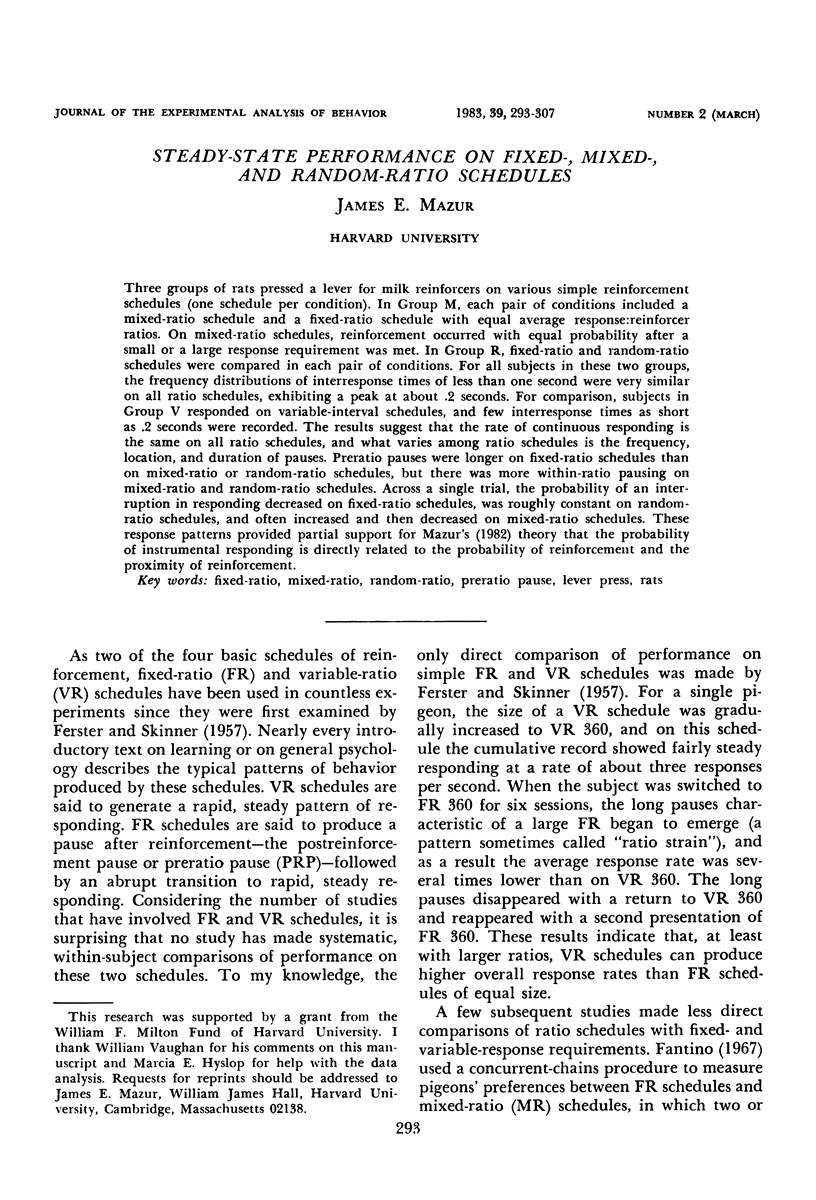
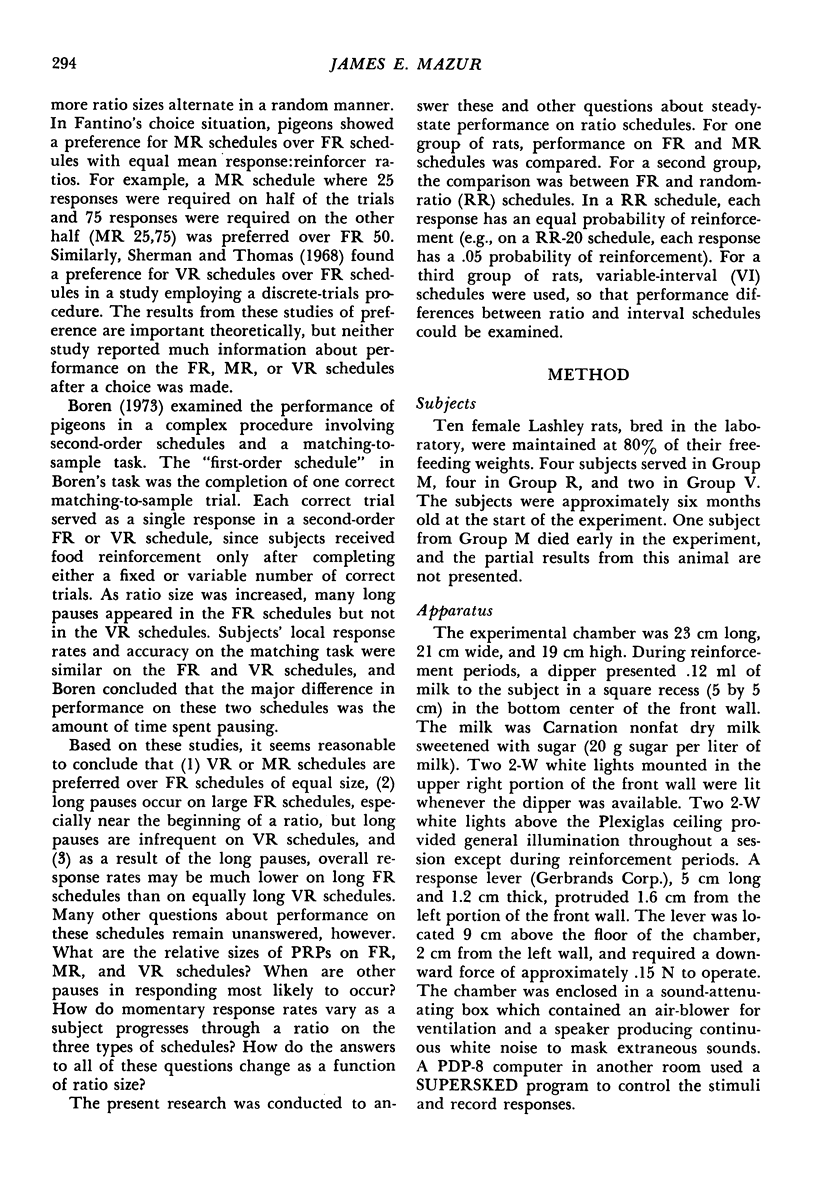
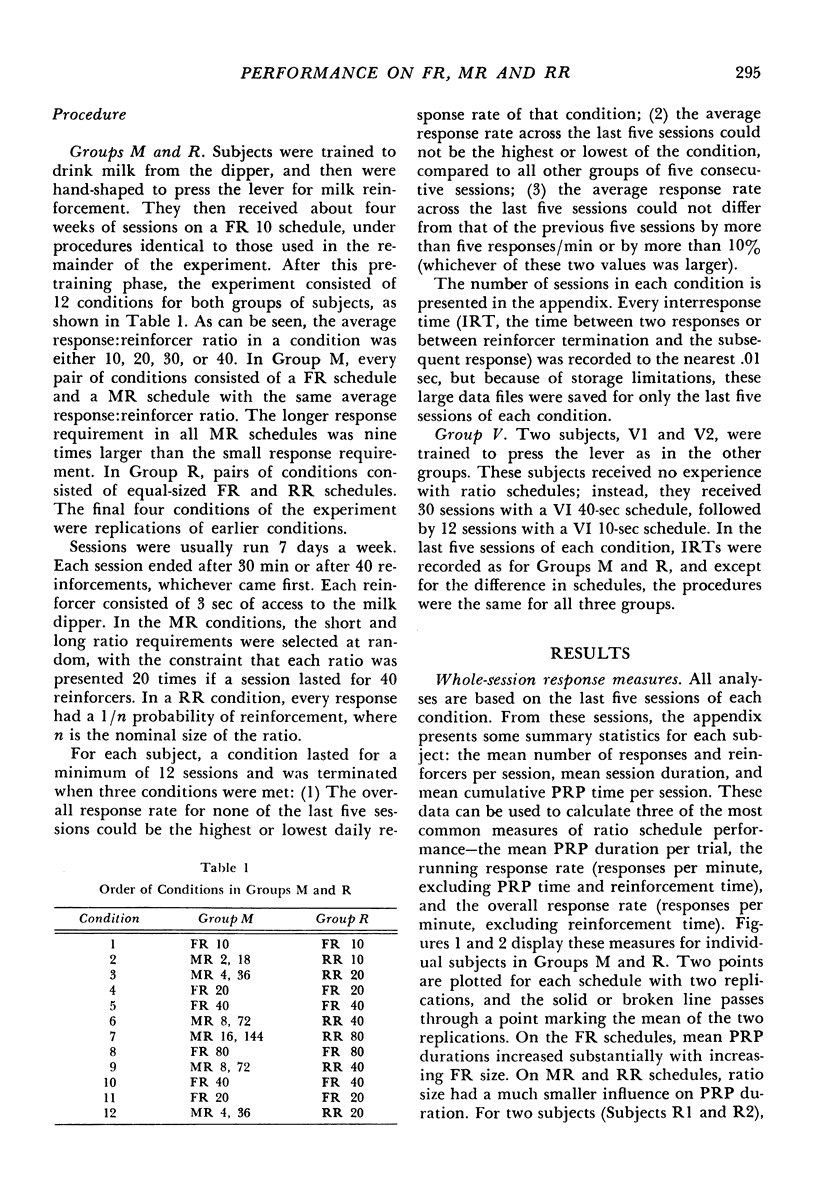
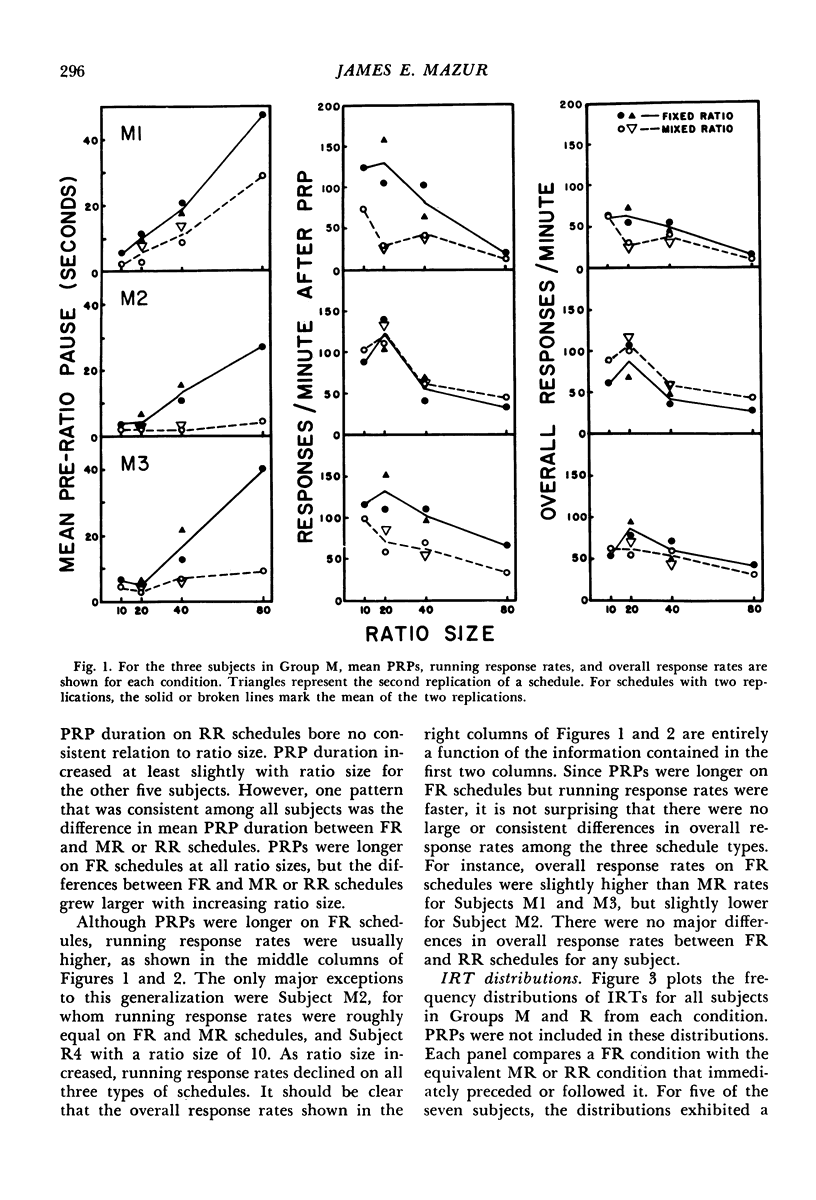
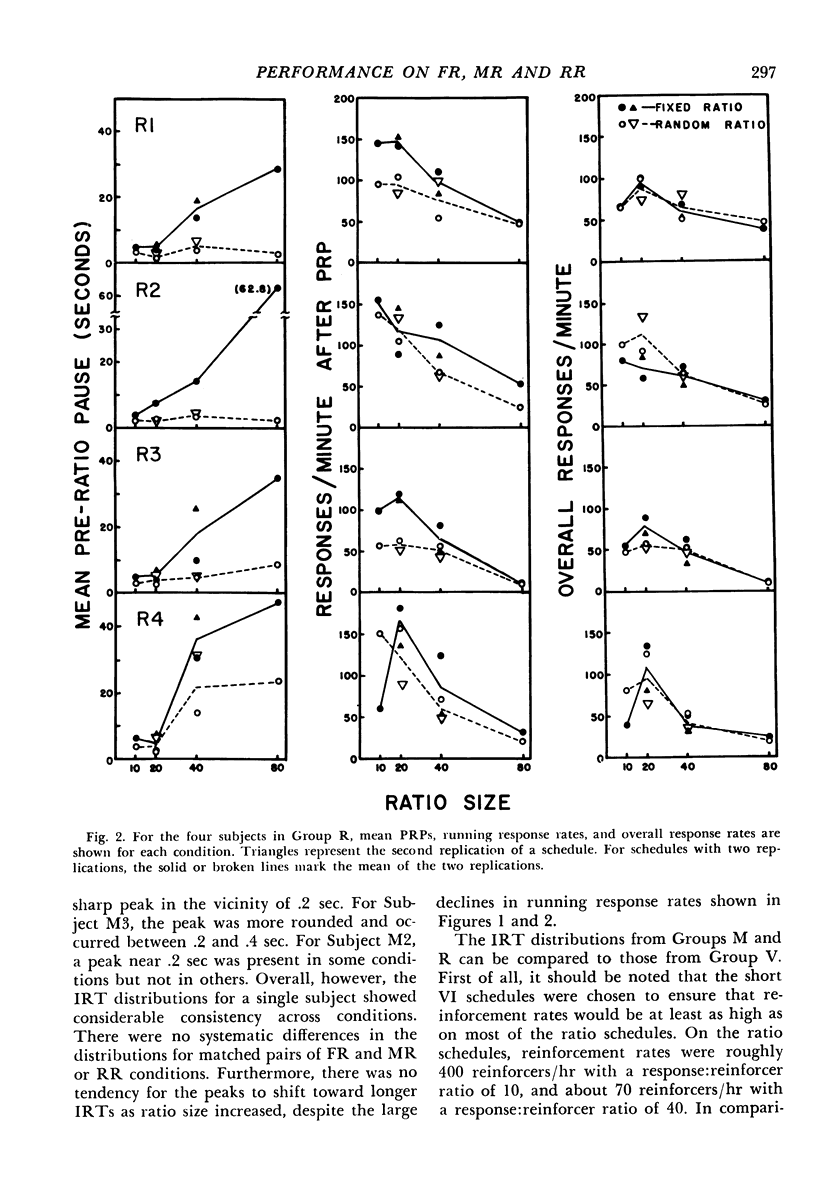
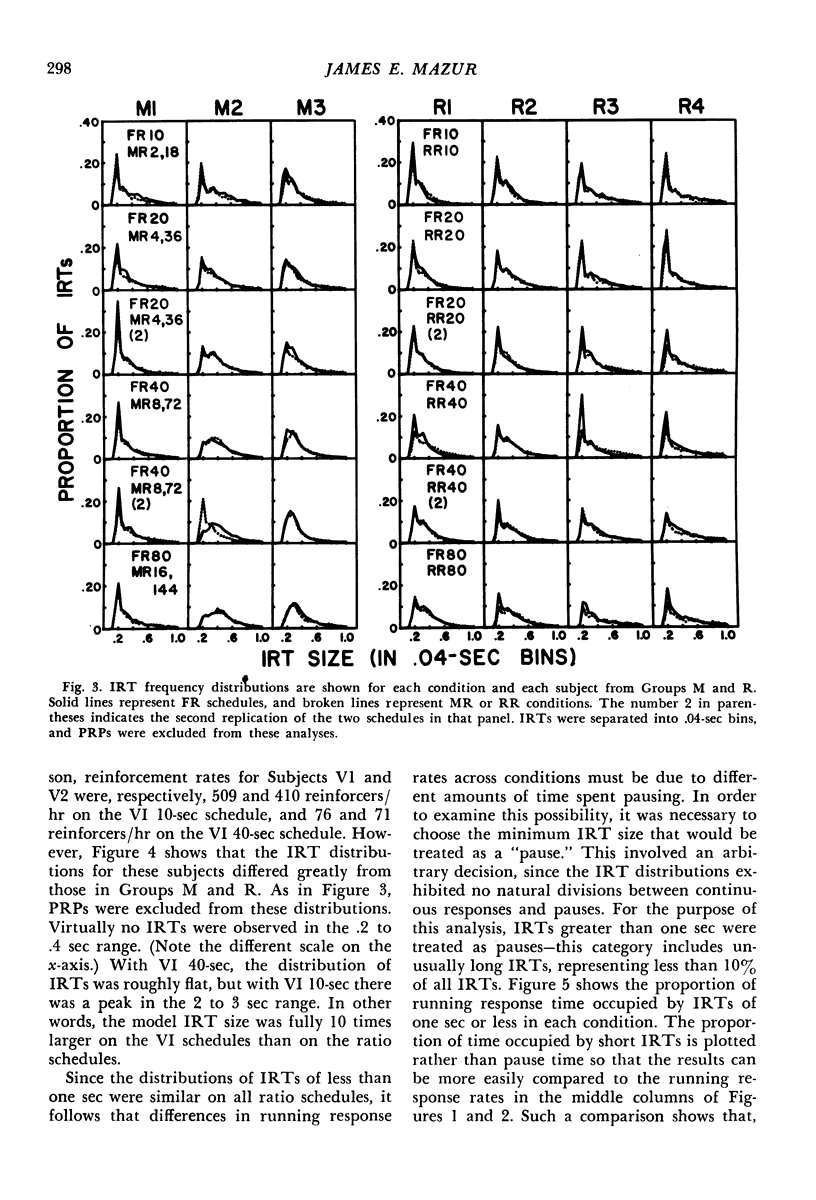
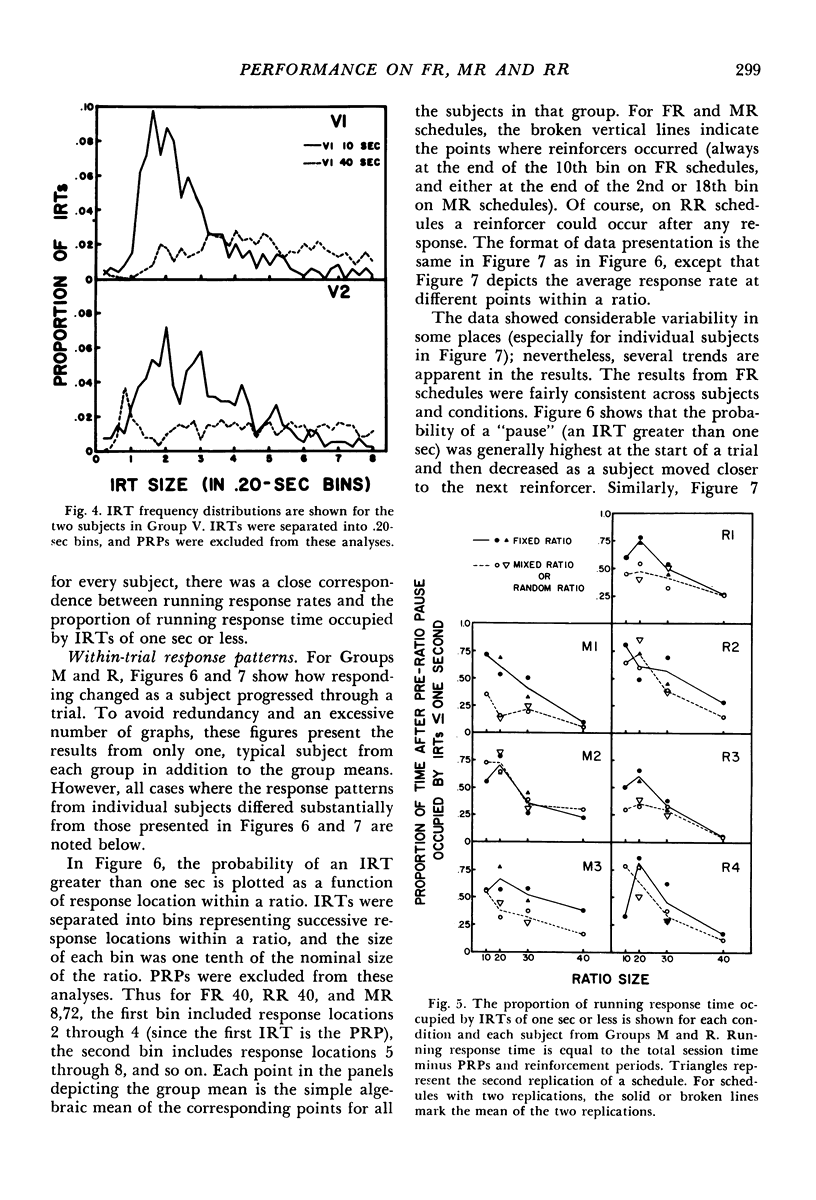

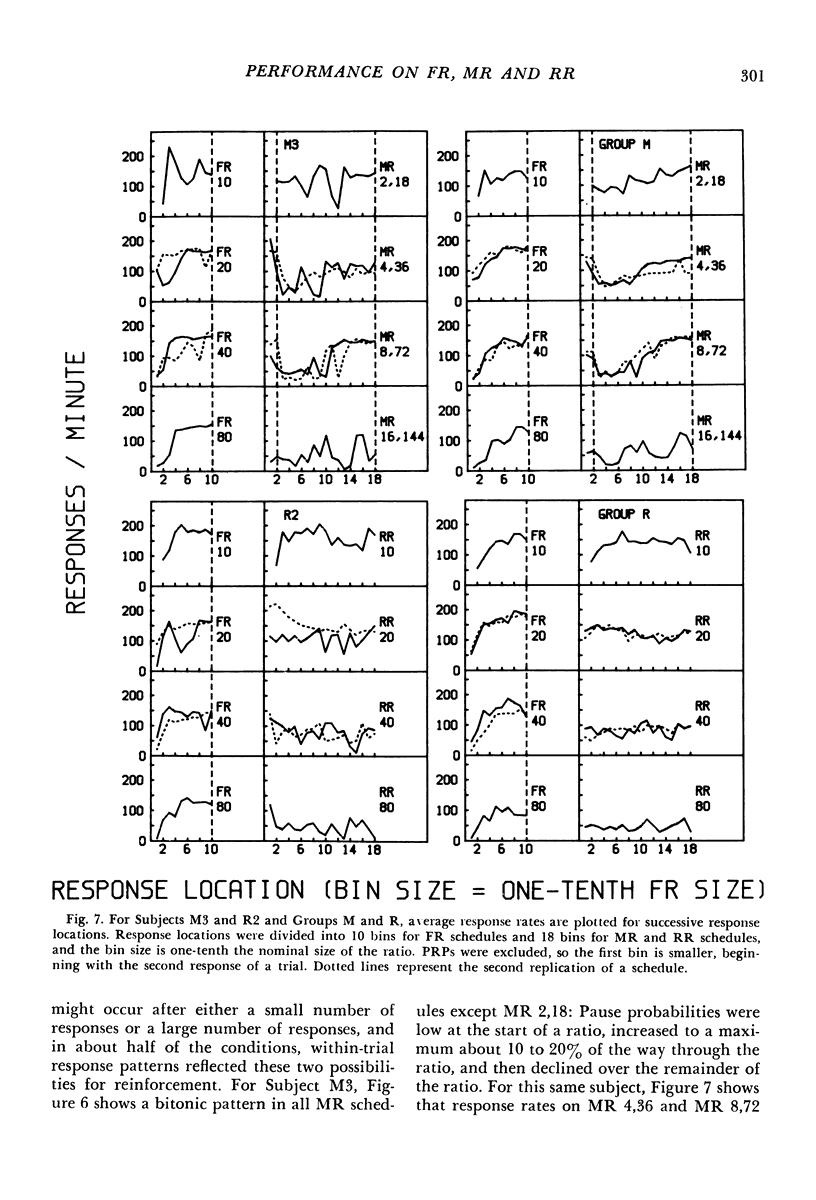
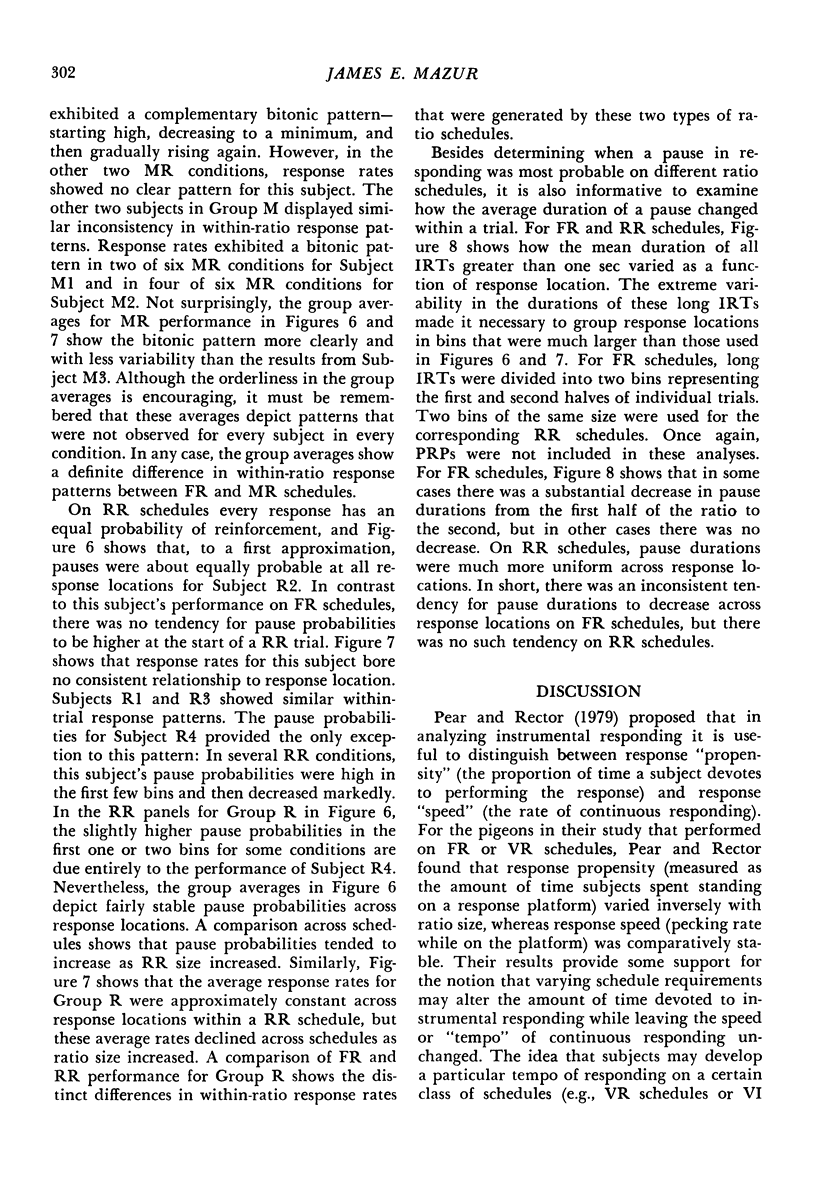
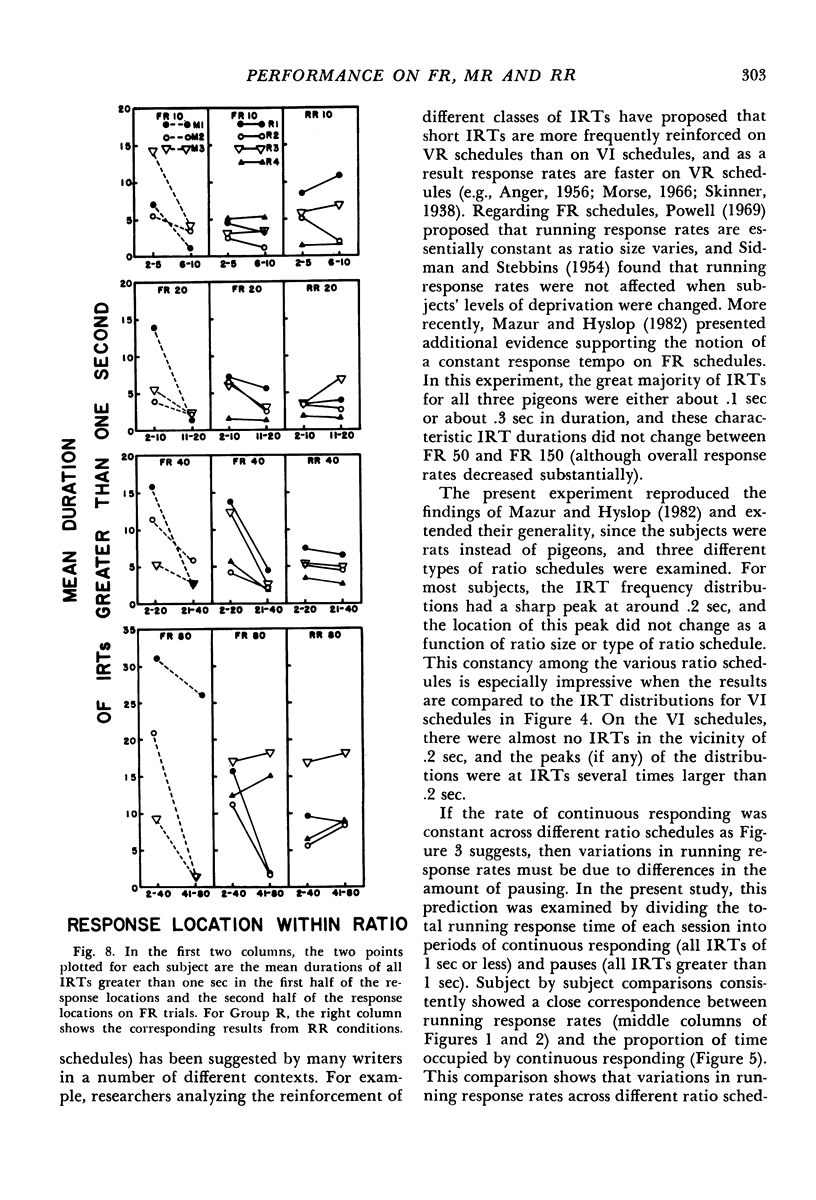
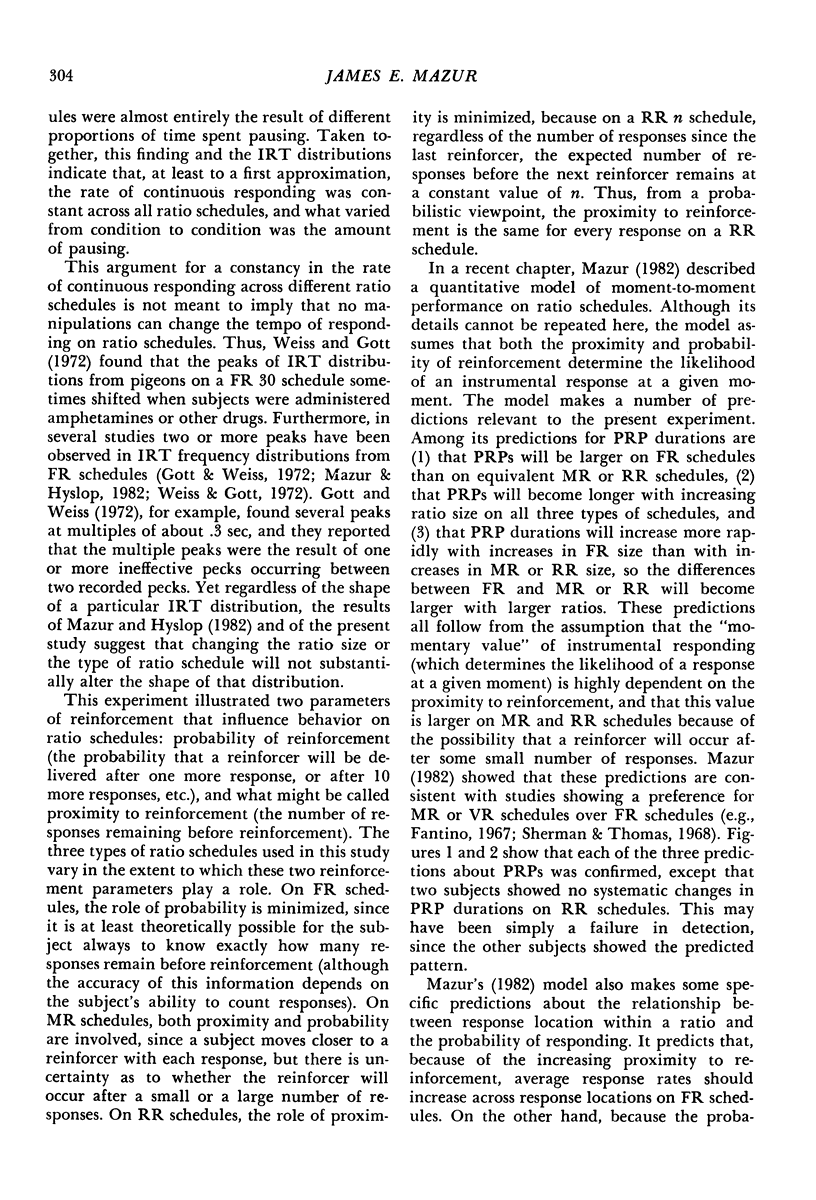
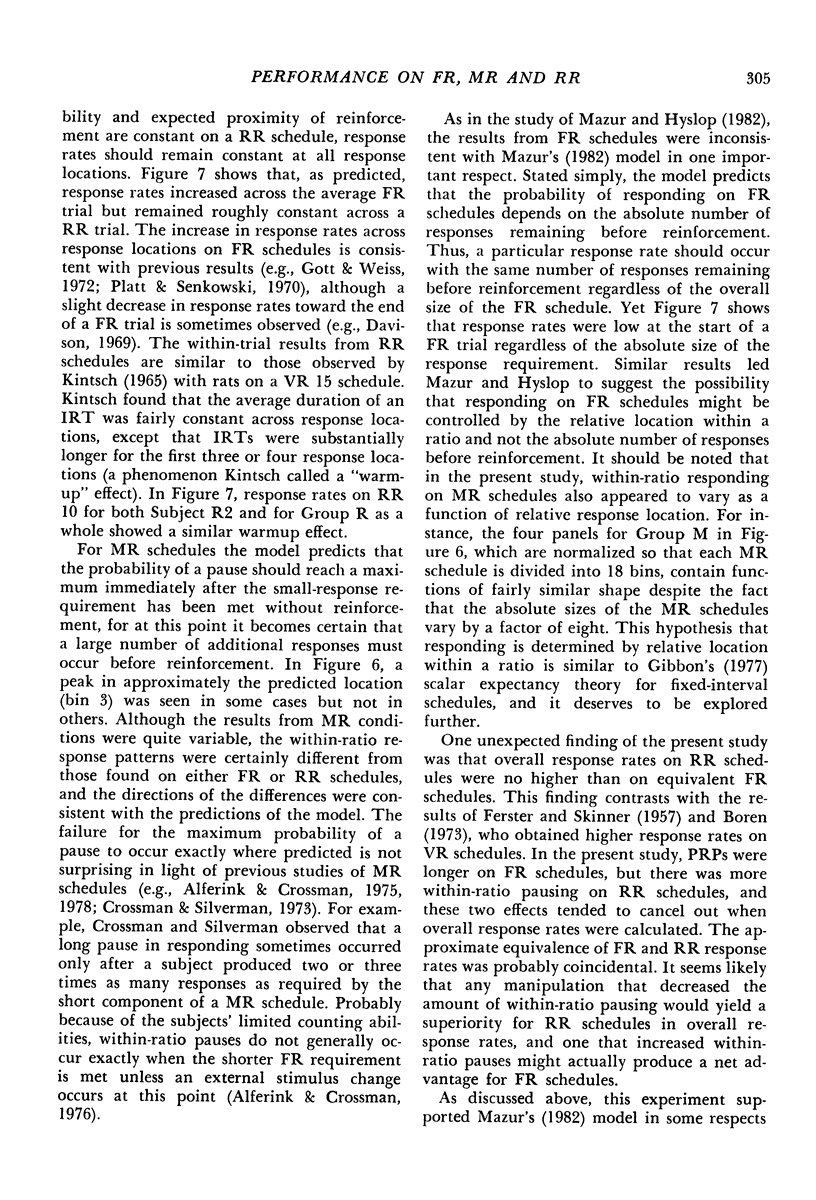
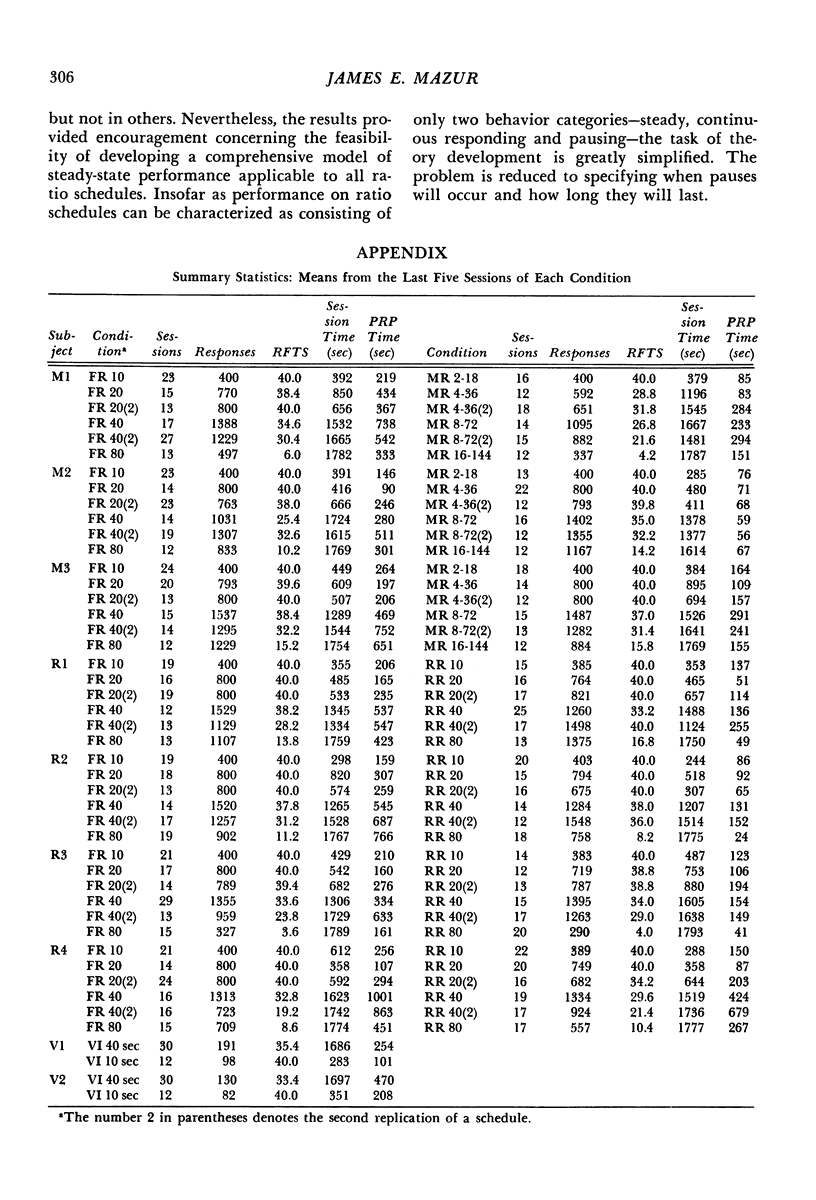
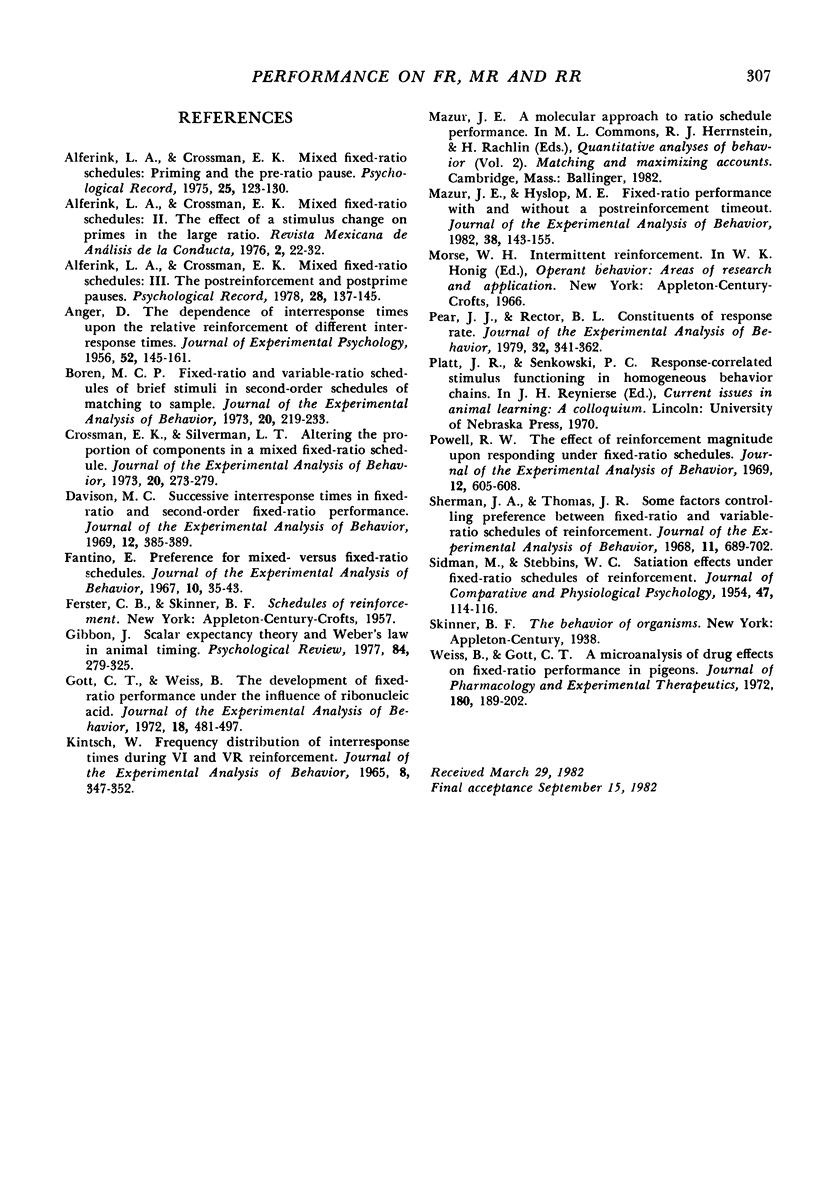
Selected References
These references are in PubMed. This may not be the complete list of references from this article.
- ANGER D. The dependence of interresponse times upon the relative reinforcement of different interresponse times. J Exp Psychol. 1956 Sep;52(3):145–161. doi: 10.1037/h0041255. [DOI] [PubMed] [Google Scholar]
- Boren M. C. Fixed-ratio and variable-ratio schedules of brief stimuli in second-order schedules of matching to sample. J Exp Anal Behav. 1973 Sep;20(2):219–233. doi: 10.1901/jeab.1973.20-219. [DOI] [PMC free article] [PubMed] [Google Scholar]
- Crossman E. K., Silverman L. T. Altering the proportion of components in a mixed fixed-ratio schedule. J Exp Anal Behav. 1973 Sep;20(2):273–279. doi: 10.1901/jeab.1973.20-273. [DOI] [PMC free article] [PubMed] [Google Scholar]
- Davison M. C. Successive interresponse times in fixed-ratio and second-order fixed-ratio performance. J Exp Anal Behav. 1969 May;12(3):385–389. doi: 10.1901/jeab.1969.12-385. [DOI] [PMC free article] [PubMed] [Google Scholar]
- Fantino E. Preference for mixed- versus fixed-ratio schedules. J Exp Anal Behav. 1967 Jan;10(1):35–43. doi: 10.1901/jeab.1967.10-35. [DOI] [PMC free article] [PubMed] [Google Scholar]
- Gott C. T., Weiss B. The development of fixed-ratio performance under the influence of ribonucleic acid. J Exp Anal Behav. 1972 Nov;18(3):481–497. doi: 10.1901/jeab.1972.18-481. [DOI] [PMC free article] [PubMed] [Google Scholar]
- KINTSCH W. FREQUENCY DISTRIBUTION OF INTERRESPONSE TIMES DURING VI AND VR REINFORCEMENT. J Exp Anal Behav. 1965 Sep;8:347–352. doi: 10.1901/jeab.1965.8-347. [DOI] [PMC free article] [PubMed] [Google Scholar]
- Mazur J. E., Hyslop M. E. Fixed-ratio performance with and without a postreinforcement timeout. J Exp Anal Behav. 1982 Sep;38(2):143–155. doi: 10.1901/jeab.1982.38-143. [DOI] [PMC free article] [PubMed] [Google Scholar]
- Pear J. J., Rector B. L. Constituents of response rates. J Exp Anal Behav. 1979 Nov;32(3):341–362. doi: 10.1901/jeab.1979.32-341. [DOI] [PMC free article] [PubMed] [Google Scholar]
- Powell R. W. The effect of reinforcement magnitude upon responding under fixed-ratio schedules. J Exp Anal Behav. 1969 Jul;12(4):605–608. doi: 10.1901/jeab.1969.12-605. [DOI] [PMC free article] [PubMed] [Google Scholar]
- SIDMAN M., STEBBINS W. C. Satiation effects under fixed-ratio schedules of reinforcement. J Comp Physiol Psychol. 1954 Apr;47(2):114–116. doi: 10.1037/h0054127. [DOI] [PubMed] [Google Scholar]
- Sherman J. A., Thomas J. R. Some factors controlling preference between fixed-ratio and variable-ratio schedules of reinforcement. J Exp Anal Behav. 1968 Nov;11(6):689–702. doi: 10.1901/jeab.1968.11-689. [DOI] [PMC free article] [PubMed] [Google Scholar]
- Weiss B., Gott C. T. A microanalysis of drug effects on fixed-ratio performance in pigeons. J Pharmacol Exp Ther. 1972 Feb;180(2):189–202. [PubMed] [Google Scholar]


